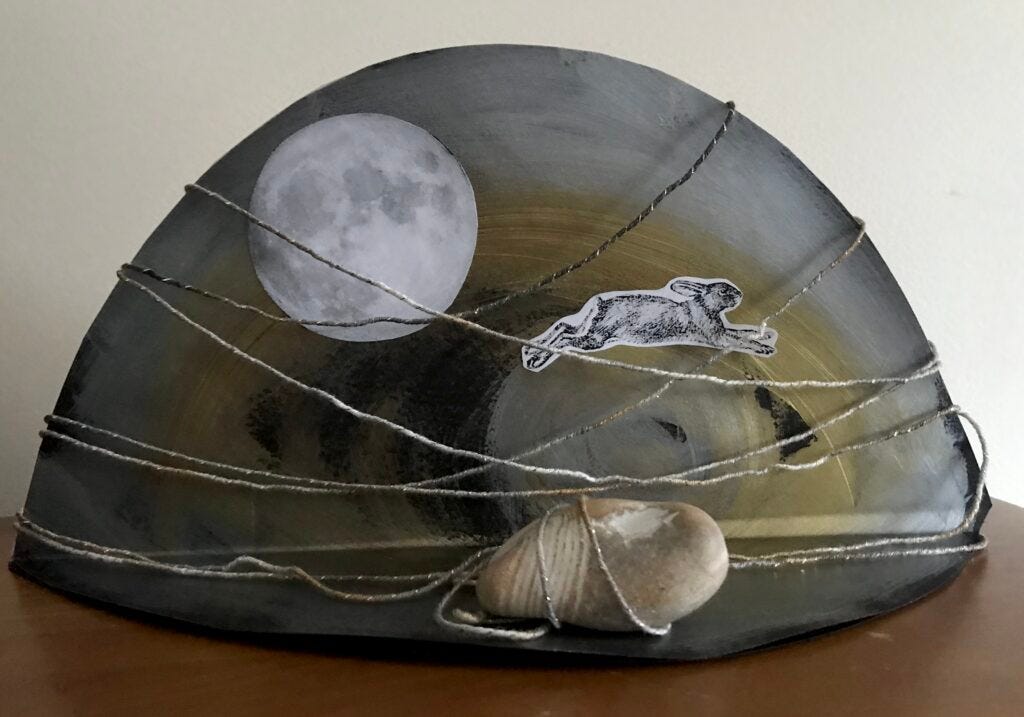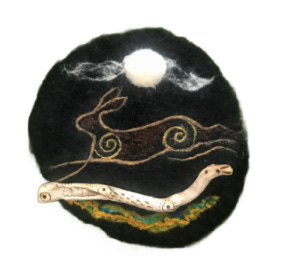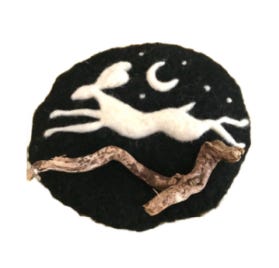I can count the number of times I've seen hares in the wild on two hands. Once while on the Isle of Mull, I was walking with a friend through a large wood, the path cut right through a plantation forest so that you could see directly behind and the path stretching out in front of you.
I looked back and saw what I thought was a small dog running towards us. Turning around I noticed it approached with an odd gait - it wasn’t a dog it was a hare! As she approached she stopped and sat down, looking at us curiously, and then bounded off into the wood.
The second encounter was on visiting a friend for my birthday, which is at the beginning of March. Her house is nestled into a small Scottish village and the view stretches over fields that lead down to a river. As I watched the last wisps of mist swirl across the fields I saw several hares wildly racing around. That was a glorious scene.
Scottish and Irish folklore tell stories of the Old Hag, the Cailleach shapeshifting into hare form.
Needle Felted Hare by Jude Lally
One story that appears many times begins with someone becoming suspicious when their dairy cows stop producing milk. If a hare is seen in the area they are suspected of being the guilty culprit, who is taking milk directly from the cow. Often the men would gather together to head out to shoot the hare. They return, unable to shoot the hare, as the hare is the shapeshifting old woman, the Cailleach, and impervious to normal bullets.
Needle Felted Hare by Jude Lally
The next day the farmer heads out again to look for the hare, armed with a silver bullet, he shoots the hare but only injures her. The men follow the hare which leads them to a cottage on the far side of the fields and on entering they find an old woman sitting by the fire with a wounded leg. In this story, the men refuse to kill an old woman but she dies a month later due to her injuries and then the cow starts giving milk again.
Another tale of the Cailleach shapeshifting into hare form happens at harvest time. As the field is harvested and the grain cut and gathered into sheaves, there are fewer places for the hare to hide. The hare (ie the hag) is then driven field to field until she reaches the last field of the last man in the village to cut the last sheaf. The hag then couldn't escape so the farmer cutting his last sheaf, which sheltered the hare, had to look after the hag/hare throughout the winter. This tradition varies from county to county but had the farmer looking after the spirit of the hag, and keeping her until the spring.
References:
(NFSC, Vol. 0950: 366). National Folklore Collection, Ireland









Thanks a million for this Jude, I love this reflection and reading the Dúchas tales too. The piece of art, 'Honoring the Cailleach in her hare form' is so beautiful, my eyes are like saucers looking at it lol. Just wonderful, thank you!